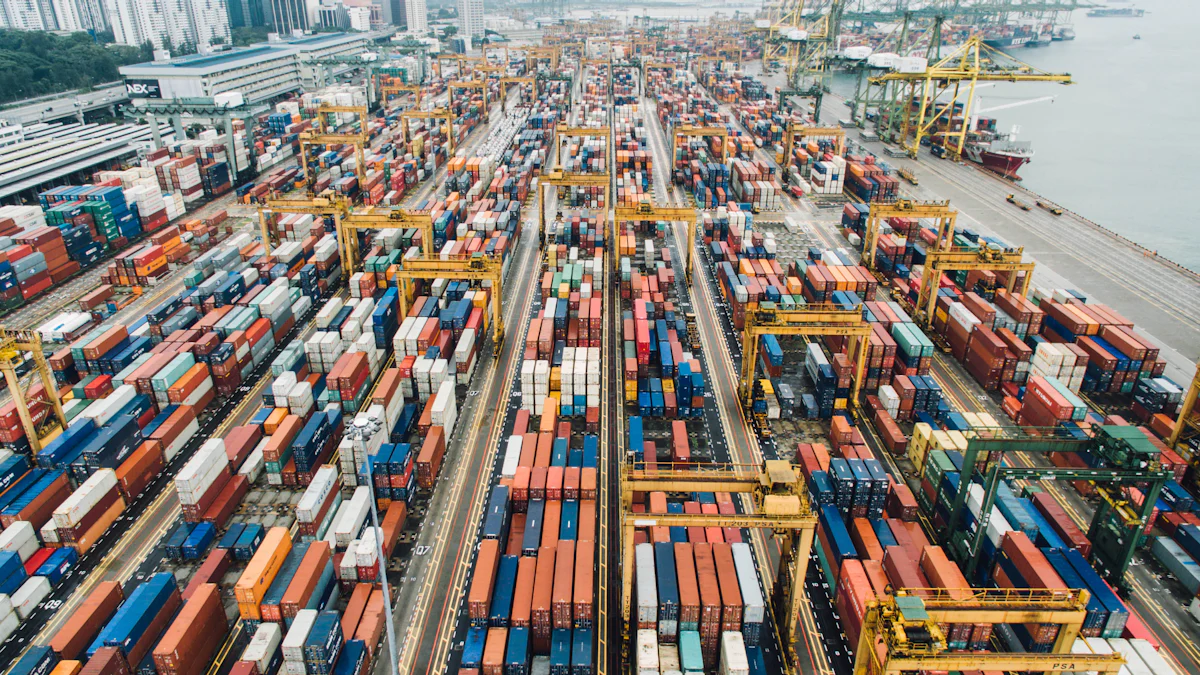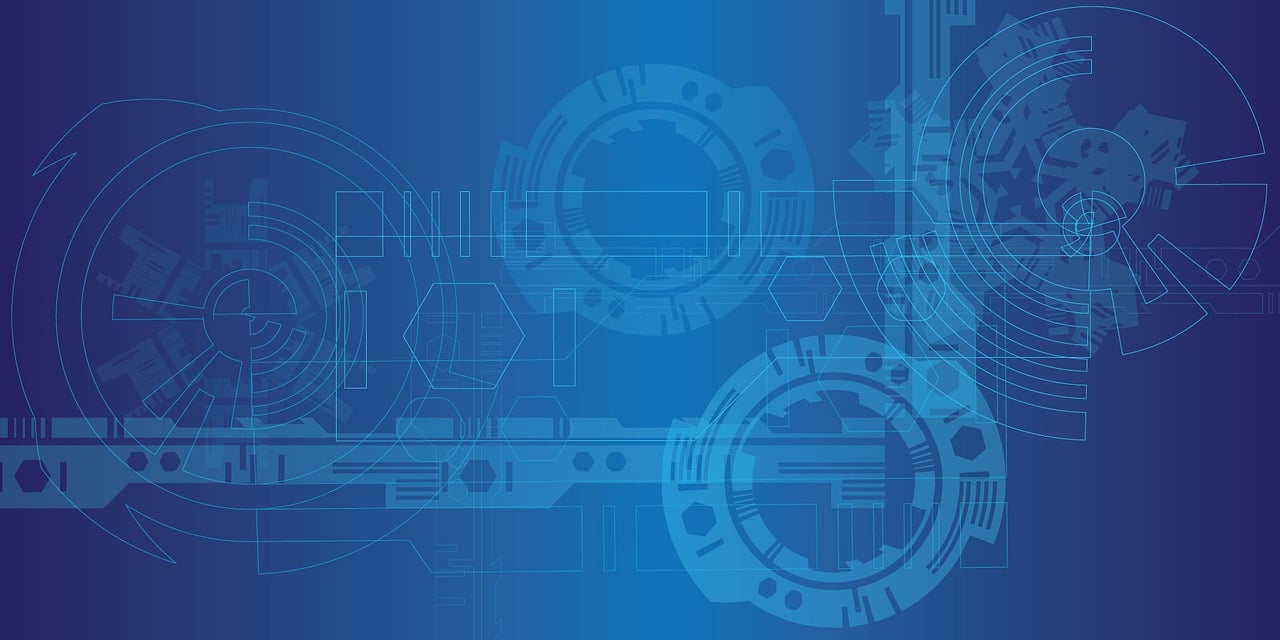Revolutionizing Supply Chains: How AI, IoT, and Blockchain Enhance Efficiency and Profitability-duplicate

The rapid evolution of technology in the supply chain industry has transformed how businesses operate. Staying updated with emerging technologies is crucial for companies aiming to maintain a competitive edge. Integrated supply chains benefit significantly from these advancements, leading to improved efficiency and profitability. Companies with next-generation supply chain capabilities achieve 23% greater profitability. AI provides real-time tracking and analysis, enhancing understanding and value creation. Investing in location tracking and data-collecting systems prepares businesses for future AI functionality. Predictive analytics help anticipate trends and potential hiccups, ensuring smoother operations.
Key Emerging Technologies in Integrated Supply Chains

Artificial Intelligence and Machine Learning in Integrated Supply Chains
Artificial Intelligence (AI) and Machine Learning (ML) are game-changers in the integrated supply chain. These technologies offer tools that enhance decision-making and operational efficiency.
Predictive Analytics
Predictive analytics uses AI to forecast future trends. Businesses can anticipate demand, manage inventory, and avoid disruptions. For example, AI analyzes historical data to predict seasonal demand spikes. Companies can stock up on popular items before the rush. This proactive approach minimizes stockouts and overstock situations.
Automation and Robotics
Automation and robotics streamline repetitive tasks. Robots handle picking, packing, and sorting in warehouses. This reduces human error and speeds up processes. Automated systems also monitor equipment health. Early detection of issues prevents costly downtime. Companies save time and money by maintaining smooth operations.
Internet of Things (IoT)
The Internet of Things (IoT) connects devices and systems. This connectivity provides real-time data and insights, which optimize supply chain management.
Real-time Tracking
IoT devices enable real-time tracking of goods. Sensors on shipments provide location updates. Companies monitor shipments from origin to destination. This visibility helps in managing delays and rerouting shipments if needed. Customers also benefit from accurate delivery estimates.
Smart Warehousing
Smart warehousing uses IoT for efficient inventory management. Sensors track inventory levels and conditions. Automated systems reorder stock when levels drop. This ensures optimal stock levels and reduces waste. Smart warehouses also use IoT for energy management. Sensors adjust lighting and temperature based on activity, saving energy costs.
Blockchain Technology
Blockchain technology offers enhanced transparency and security. This technology records transactions in a decentralized ledger, making data tamper-proof.
Enhanced Transparency
Blockchain provides a transparent view of the supply chain. Every transaction gets recorded and verified. Stakeholders can trace products from origin to end-user. This transparency builds trust among partners and customers. It also helps in identifying and resolving issues quickly.
Secure Transactions
Blockchain secures transactions by encrypting data. Only authorized parties can access transaction details. This reduces the risk of fraud and data breaches. Companies can confidently share sensitive information with partners. Secure transactions ensure compliance with regulations and protect business interests.
Advanced Data Analytics
Advanced data analytics play a pivotal role in the integrated supply chain. These tools help businesses make informed decisions and optimize various processes.
Demand Forecasting
Demand forecasting uses advanced data analytics to predict future customer needs. Companies analyze historical sales data to identify patterns and trends. This information helps businesses anticipate demand spikes and plan accordingly. For example, a retailer can stock up on popular items before a holiday season. Accurate demand forecasting reduces the risk of stockouts and overstock situations. Businesses can maintain optimal inventory levels and meet customer expectations.
Inventory Optimization
Inventory optimization ensures that companies maintain the right amount of stock. Advanced data analytics monitor inventory levels and usage patterns. Businesses can identify slow-moving items and adjust their stock accordingly. This approach minimizes excess inventory and reduces storage costs. Real-time data helps companies reorder products before they run out. Automated systems can place orders when inventory levels drop below a certain threshold. This proactive strategy keeps the supply chain running smoothly and efficiently.
Impact on Supply Chain Integration
Emerging technologies have a profound impact on the integration of supply chains. These advancements foster better collaboration, enhance efficiency, and provide greater flexibility.
Improved Collaboration in Integrated Supply Chains
Supplier Coordination
Supplier coordination becomes seamless with advanced technologies. Real-time data sharing allows suppliers to align their operations with demand. Predictive analytics help suppliers anticipate needs and adjust production schedules. This coordination reduces delays and ensures a steady flow of materials.
Customer Relationship Management
Customer relationship management (CRM) benefits from integrated supply chain technologies. Companies use data analytics to understand customer preferences. Personalized experiences enhance customer satisfaction. Automated systems handle customer inquiries and orders efficiently. CRM tools track interactions and provide insights for improving services.
Enhanced Efficiency
Process Automation
Process automation transforms supply chain operations. Robotic Process Automation (RPA) handles repetitive tasks. Automation reduces human error and speeds up workflows. Companies save time and resources by automating order processing and inventory management. Automated systems monitor equipment health and schedule maintenance. This proactive approach prevents downtime and maintains smooth operations.
Reduced Lead Times
Reduced lead times result from efficient supply chain processes. Data analytics optimize delivery routes and schedules. Companies use real-time tracking to monitor shipments. Route optimization reduces fuel consumption and delivery times. Faster deliveries enhance customer satisfaction and reduce operational costs.
Greater Flexibility
Adaptive Supply Chain Networks
Adaptive supply chain networks respond quickly to changes. IoT devices provide real-time data on inventory levels and conditions. Companies adjust their supply chain strategies based on this data. Flexible networks adapt to market fluctuations and disruptions. Businesses maintain continuity and meet customer demands effectively.
Customization Capabilities
Customization capabilities improve with integrated supply chain technologies. Advanced data analytics provide insights into customer preferences. Companies offer personalized products and services. Customization enhances customer loyalty and drives sales. Automated systems handle custom orders efficiently. This capability sets businesses apart in a competitive market.
Future Trends and Innovations

Autonomous Vehicles and Drones
Autonomous vehicles and drones are revolutionizing the integrated supply chain. These technologies enhance efficiency and reduce costs.
Last-Mile Delivery
Autonomous vehicles and drones streamline last-mile delivery. Companies use drones to deliver packages quickly in urban areas. Autonomous vehicles navigate complex routes without human intervention. This reduces delivery times and operational costs. Customers receive their orders faster, improving satisfaction.
Warehouse Automation
Warehouse automation benefits from autonomous vehicles and drones. Drones conduct inventory checks by scanning barcodes. Autonomous vehicles transport goods within warehouses. This reduces the need for manual labor and minimizes errors. Companies maintain accurate inventory levels and efficient operations.
Augmented Reality (AR) and Virtual Reality (VR)
Augmented Reality (AR) and Virtual Reality (VR) bring new possibilities to the integrated supply chain. These technologies improve training and visualization.
Training and Simulation
AR and VR provide immersive training experiences. Employees use VR headsets to simulate real-world scenarios. This helps them learn procedures without risks. AR overlays digital information on physical environments. Workers receive step-by-step instructions through AR glasses. This enhances learning and reduces training time.
Enhanced Visualization
Enhanced visualization through AR and VR aids decision-making. Managers use VR to visualize warehouse layouts. This helps in planning efficient storage solutions. AR provides real-time data on equipment status. Maintenance teams identify issues quickly using AR devices. This proactive approach prevents downtime and maintains smooth operations.
Quantum Computing
Quantum computing holds immense potential for the integrated supply chain. This technology solves complex problems and optimizes processes.
Complex Problem Solving
Quantum computing tackles complex problem solving with ease. Traditional computers struggle with large datasets. Quantum computers process vast amounts of data quickly. This helps in optimizing supply chain networks. Companies solve routing and scheduling problems efficiently. This leads to cost savings and improved performance.
Optimization Algorithms
Optimization algorithms benefit from quantum computing. These algorithms analyze multiple variables simultaneously. Quantum computers find optimal solutions faster than classical computers. Companies use these solutions to improve inventory management. This ensures that stock levels meet demand without excess. Businesses achieve higher efficiency and lower costs.
Emerging technologies have transformed integrated supply chains. AI, IoT, and blockchain have revolutionized operations. Companies now achieve greater efficiency and profitability.
Adopting these technologies is crucial for future-proofing supply chains. Leaders invest heavily in sophisticated tools like AI and generative AI. These investments build capabilities essential for efficiency, agility, and resilience.
Supply chain management will continue evolving. The potential for reinvention remains massive. Businesses must stay updated with technological advancements. Embracing innovation ensures competitiveness and success in a rapidly changing world.
See Also
Exploring Tech-Driven Solutions for Evolving Supply Chains
Discovering Cutting-Edge Transport Tech for Supply Chains
Boosting Supply Chains Through Cloud-Based Tech Solutions
